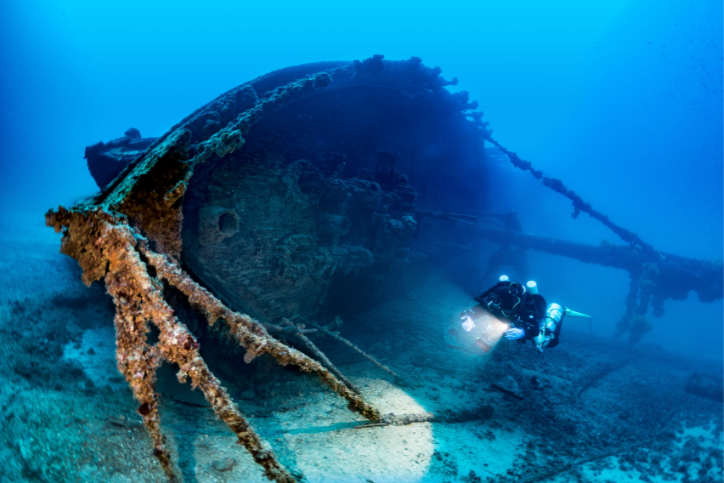It is estimated that more than 3 million shipwrecks lie at the bottom of our oceans.
On the one hand, these shipwrecks create a new habitat for sea creatures. Over the time corals and thus all kinds of fish species settle down in the ships. Which also attracts larger predators.
Shipwrecks are also an exciting adventure for divers. There is much to marvel at. Not only just the newly created biodiversity at mostly monotonous dive sites are attractive. There are also old shiploads or warships to explore, like the “Giuseppe Dezza” in the Adriatic Sea with its well-preserved anti-aircraft guns.
On the other hand, the corrosion of the metal shipwrecks by the salty water is a ticking bomb.
According to estimates, there are around 9,000 shipwrecks at the bottom of the ocean, containing a total of up to 15 million tons of oil as cargo or fuel. Around 350 of these ships can be found only in the Mediterranean Sea.
Oceans are also referred to as the largest museum of war relics. About 75% of the sunken wrecks date back to World War II. In addition to oil, they mainly store ammunition. According to official estimates, there are around 1.3 million tons of ammunition from World War II times only in the German North Sea. Over the years, the ammunition is eroded and releases significant amounts of toxic substances such as mercury. These substances are not biodegradable and are found in marine animals in the surrounding area. This can be investigated, for example, in mussels, which act like filters and deposit escaping substances in their meat.
A recovery of the wrecks is usually too costly for the governments and the question of which government is responsible for it at all would have to be clarified first.
This is the beginning of a race against time until the next wreck breaks!

